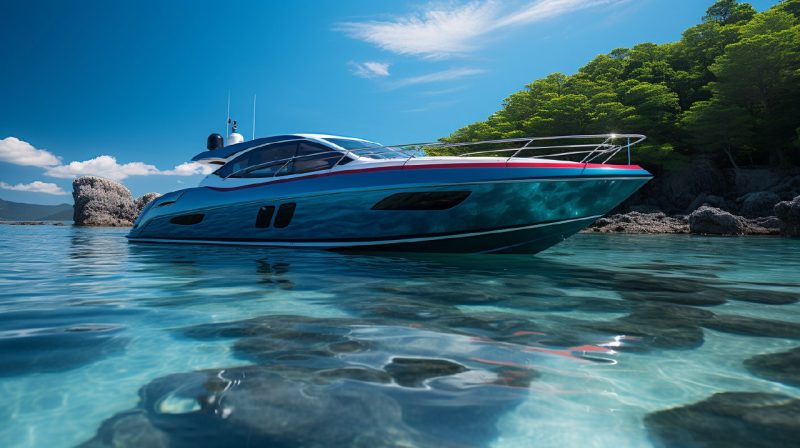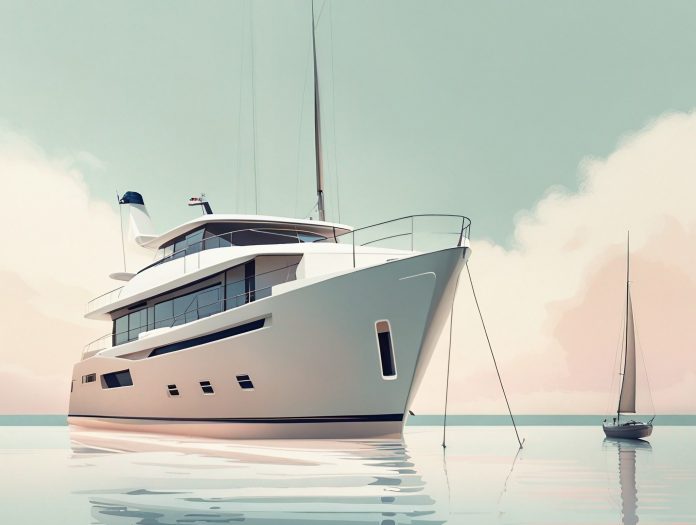In an era defined by environmental consciousness, eco yachts have emerged as pioneers of sustainable luxury. But what exactly makes these vessels environmentally-friendly marvels? Join us on a journey to uncover the innovative technologies and design principles that have propelled eco yachts to the forefront of modern yachting.
Environmentally friendly sustainable yachts refer to watercraft designed and operated with a strong emphasis on minimizing their environmental impact.

These yachts are built and operated in a way that reduces harm to the natural surroundings they navigate through. This can involve a range of practices and technologies, such as:
Efficient Fuel Use:
Utilizing advanced propulsion systems, like hybrid or electric engines, that consume less fuel and produce fewer emissions compared to traditional engines.
Renewable Energy Integration:
Incorporating solar panels, wind turbines, or other renewable energy sources to generate power on board, reducing reliance on fossil fuels.
Waste Management:
Implementing advanced waste treatment systems to minimize pollution from sewage and other waste materials.
Hull Design:
Employing streamlined and hydrodynamic hull designs that reduce fuel consumption and increase efficiency.
Alternative Materials:
Using eco-friendly and sustainable materials for construction, and minimizing the use of materials harmful to the environment.
Anti-fouling Paints:
Utilizing non-toxic, environmentally friendly paints that prevent the growth of marine organisms on the hull, reducing the need for harmful antifouling chemicals.
Efficient Systems:
Employing advanced systems for heating, cooling, lighting, and other onboard operations that minimize energy consumption.
Green Initiatives in Operation:
Adopting eco-friendly practices while operating the yacht, such as responsible anchoring, adherence to marine protected areas, and proper waste disposal.
Efforts to Offset Carbon Emissions:
Investing in projects that capture or reduce the equivalent amount of CO2 emissions produced by the yacht’s operation.
Overall, environmentally friendly sustainable yachts aim to harmonize the pleasure of yachting with responsible stewardship of the marine environment. This involves considering the full lifecycle of the yacht, from its construction to its operation and eventual decommissioning.
Green technology in yachting refers to the implementation of environmentally-friendly practices and the use of sustainable technologies to reduce the negative impact of yachts on the environment. It encompasses various strategies and innovations aimed at conserving energy, minimizing emissions, and preserving natural resources. Here are some key aspects of green technology in yachting:
Hybrid Propulsion Systems:
These systems combine traditional engines with electric motors or alternative power sources like batteries. They allow yachts to operate in a more fuel-efficient and eco-friendly manner, especially during low-speed cruising or when maneuvering in harbors.
Solar Panels:
Installing solar panels on a yacht’s deck or superstructure allows it to harness energy from the sun to power onboard systems and reduce reliance on generators. This renewable energy source can help lower fuel consumption and emissions.
Wind Turbines:
Small-scale wind turbines integrated into a yacht’s design can generate additional power from wind energy, further reducing the need for conventional engines or generators.
Energy-Efficient Systems:
Utilizing LED lighting, high-efficiency HVAC systems, and advanced insulation materials can significantly reduce overall energy consumption on a yacht.
Advanced Hull Designs:
Hydrodynamic hull designs and specialized coatings can improve a yacht’s efficiency, reducing resistance in the water and leading to better fuel economy.
Exhaust Gas Cleaning Systems (Scrubbers):
Scrubbers are used to remove harmful pollutants from exhaust gases, reducing air pollution and emissions of sulfur and nitrogen oxides.
Waste Management Systems:
Implementing advanced waste treatment and recycling systems allows yachts to minimize their environmental impact by properly managing sewage, greywater, and other waste streams.
Eco-Friendly Materials:
Using sustainable and recyclable materials in the construction and outfitting of yachts can reduce their overall environmental footprint.
Noise Reduction Technology:
Quieter engines and sound insulation techniques not only enhance passenger comfort but also reduce the impact of yachts on marine wildlife.
LNG (Liquefied Natural Gas) Propulsion:
LNG is a cleaner-burning fuel option compared to traditional marine diesel. Some yachts are being designed to run on LNG to reduce emissions.
Dynamic Positioning Systems:
These advanced navigation systems allow yachts to maintain position without dropping anchor, reducing damage to sensitive marine ecosystems.
Environmental Management Plans:
These plans outline strategies for responsible cruising, including avoiding sensitive areas, respecting wildlife, and adhering to waste disposal regulations.
By integrating these green technologies and practices, yachting aims to become more sustainable and environmentally conscious, contributing to the preservation of marine ecosystems and minimizing the industry’s impact on the natural world.

